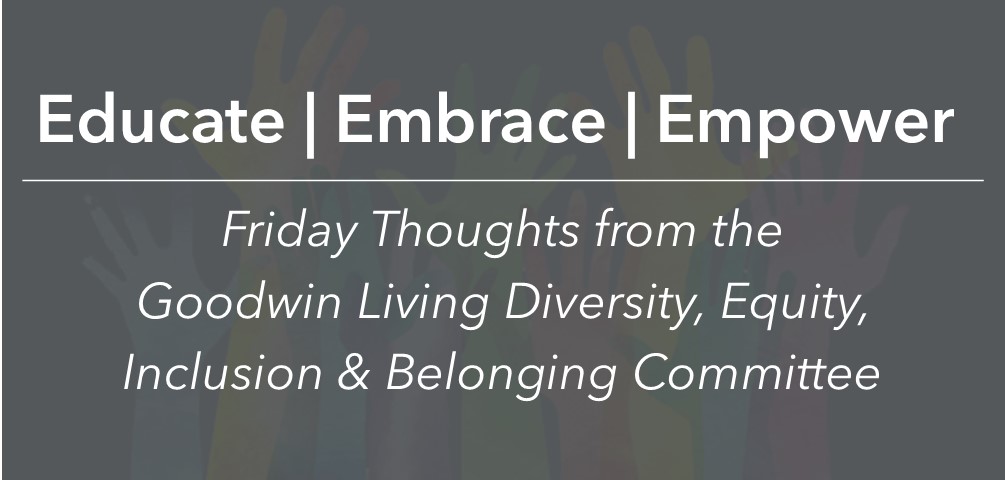Diversity Equity Inclusion & Belonging
October 16, 2024
The Jewish High Holidays – Two Perspectives
by Rabbi Gail Fisher & Ellen Blalock, Future GHBC Resident
Rabbi Gail Fisher
This section is a reprint of a Friday Thoughts article published in 2021.
Rosh Hashanah and Yom Kippur, collectively known as the “High Holidays,” are two of the most significant holidays on the Jewish calendar, falling in the Jewish month of Tishrei. They mark the culmination of a period of introspection, repentance and spiritual renewal. This period starts with the Hebrew month of Elul, which precedes Tishrei. During Elul, we enter into the mind frame required for the High Holidays. Traditionally, we search our memories for all the ways in which we may have fallen short during the previous year. We ask our family, friends and God for forgiveness for any way we have wronged them. The shofar (ram’s horn) is blown to emphasize the solemnity of this period. We also read Psalm 27 every day.
Rosh Hashanah, literally “Head of the Year,” begins on the first day of Tishrei. This is a solemn occasion focused on reflection and spiritual renewal, marking the beginning of the ten days known as the “Days of Awe”. The central themes of Rosh Hashanah include the sovereignty of God, the renewal of the world and the human responsibility to live a righteous life. Not only are wrongdoings of the past year examined, but intentions are set for behavior in the year to come.
A central ritual of Rosh Hashanah is the sounding of the shofar during synagogue services. The shofar’s piercing blasts serve as a spiritual wake- up call, urging worshippers to examine their lives and return to a path of righteousness. Special prayers are added to the liturgy, further elevating the solemnity of this day.
In addition to prayer, Rosh Hashanah is celebrated with festive meals with family and friends that include symbolic foods. Apples dipped in honey are perhaps the most well-known symbol, representing the hope for a sweet and prosperous new year. There is usually a special challah served on this holiday, which for Rosh Hashanah is shaped in a circle. This symbolizes the cycle of a year. It is typically studded with raisins for added sweetness. Some indulge in apple or honey cake, also indicators of hopes for a sweet year to come.
At the end of the Days of Awe is Yom Kippur, the “Day of Atonement.” This is a day dedicated entirely to fasting, prayer and seeking forgiveness for sins committed over the past year. Yom Kippur is seen as the culmination of the process of repentance that began in Elul, further emphasized with Rosh Hashanah. Jewish legend teaches us that our fates are sealed for the coming year at the close of Yom Kippur.
In addition to fasting, many Jews refrain from other physical pleasures and avoid wearing leather shoes as a sign of humility. Throughout the day, the synagogue services include confessional prayers (Vidui).
The closing service of Yom Kippur, called Neilah, is particularly moving, as the gates of heaven are believed to close at the end of the day. The final shofar blast marks the conclusion of the holiday, and it is followed by a communal breaking of the fast.
Visit this website to learn more. I also recommend a great book: Your Guide to the Jewish Holidays: From Shofar to Seder by Cantor Matt Axelrod.
Ellen Blalock
Rosh Hashanah (New Year) and Yom Kippur (Day of Atonement) bookend the 10-day period known as the Jewish “High Holidays,” bringing Jewish families and communities together in sweet and special ways—linking generations of our people through tradition and hope. Memories of past celebrations extend into the future as our natural and spiritual “Cycle of Life” nears its end and begins again—over and over, year after year. We are called by the shofar and surrounded by the familiar faces of those we love, as we share the mitzvah (commandment) of reviewing our actions during the past year, repenting for the ways we have “fallen short”, “returning” to our highest moral and ethical values, and recommitting to living as our best selves.
My most cherished Jewish memories from childhood revolve around this High Holiday cycle. Together with my grandparents, parents, sister, cousins and closest family friends—with the kids not in school, and fathers with us in the daytime and not at “work!”—I fondly recall extra-nice (often new) clothes and eloquent High Holiday-specific liturgy echoing in our elegant, high-domed Temple Beth Israel Sanctuary in Altoona, Pa., the sunlight streaming through ornate stained glass windows during loooooong morning and afternoon worship services; a mysterious but magical-sounding mix of Hebrew and English readings asking God to forgive us and grant us a “new beginning;” soaring prayer-melodies played on our enormous pipe organ, lifting us where words alone couldn’t take us; and the warm embraces afterwards as we hugged and kissed and wished each other “Gut Yontiff,” (a “Yiddish-ized” version of the Hebrew “Yom Tov”, or “good day”). When the weather was nice, we walked home in the afternoon, smiling and waving at the neighbors. On Rosh Hashanah we prayed and feasted. On Yom Kippur we prayed and fasted, young ones waiting impatiently for the “Break-the-Fast” light communal meal that came afterwards— kugel (noodle pudding) was my favorite dish!). On the days in between Rosh Hashanah and Yom Kippur, when “real life” briefly resumed, we knew that we were in the midst of an extraordinary time of renewal that connected us with Jews everywhere.
As a Mom, I was delighted and determined to bring all of these meaningful moments to my daughters. The annual rituals flowed from my childhood into theirs as we welcomed the New Year and the “Days of Awe” that followed. Together with our extended family and friends, we “reviewed”, repented and “recommitted” ourselves in the sacred space (that was itself “renewed” and splendidly dressed in the purity of white) of my “adult” congregation Temple Rodef Shalom. Our lively Chavurah (close friends group) meeting to “Break-the-Fast” wrapped us in shared love and laughter that we still and will always treasure. The resonances from my own childhood took on even deeper significance as I felt the importance of imprinting and investing my children in the long chain of Jewish history and tradition that links us to generations of our family—and others.
Now, as a proud Jewish Grandma, I experience the joy of introducing my eight-year-old grandson to these beloved Holiday family traditions. I will be celebrating this legacy with him and my daughter in Massachusetts, knowing that, through our precious memories, generations of my family are with us as well. I hope someday to see him wearing the hand-woven tallit (prayer shawl) and kippah (ritual skullcap) that I bought him in Israel. Endings and beginnings—now it’s me making the kugel!
The shofar’s resounding blasts charges us to hear this call: “wake up” and “return” to our better selves—filled with the sense that each of us needs to stand up for justice, kindness, tolerance, dignity and peace for all people. And each of us matters.
_____________________________________________________
Goodwin Living DEIB Committee: Statement of Purpose: Educate, Embrace and Empower team members, residents, members* and all served by Goodwin Living to support Diversity, Equity, Inclusion and Belonging.
Goodwin Living DEIB Committee Desired Outcome: The Diversity, Equity, Inclusion and Belonging Committee (DEIB) will seek open and honest communication and collaboration that will inform and celebrate the age, culture, ethnicity and sexual orientation of team members, residents, members* and all served by Goodwin Living without bias.
*Members include Priority Club members and Goodwin Living at Home.
Questions or comments? Please contact us at DEIB@GoodwinLiving.org





